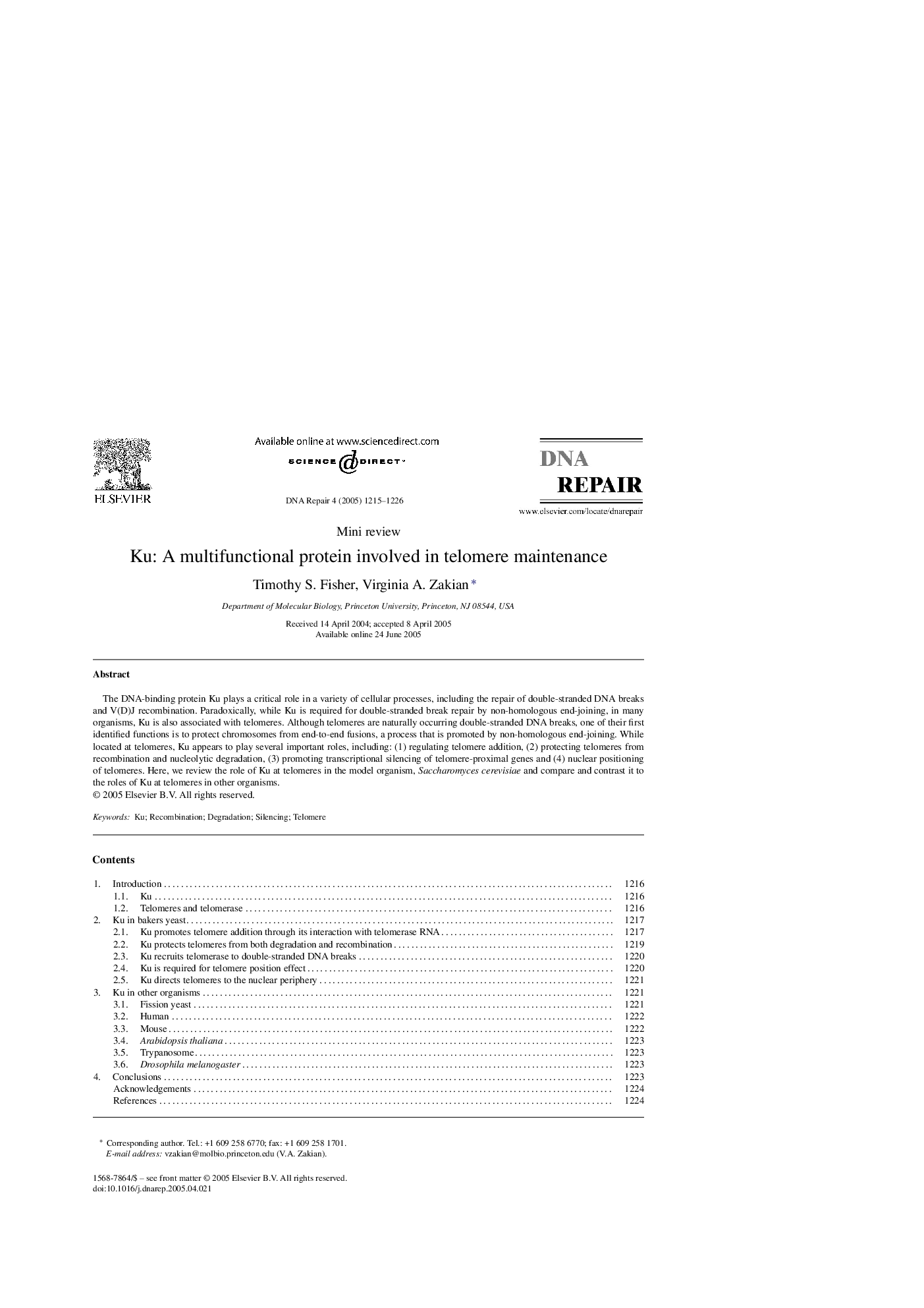| Article ID | Journal | Published Year | Pages | File Type |
|---|---|---|---|---|
| 10823992 | DNA Repair | 2005 | 12 Pages |
Abstract
The DNA-binding protein Ku plays a critical role in a variety of cellular processes, including the repair of double-stranded DNA breaks and V(D)J recombination. Paradoxically, while Ku is required for double-stranded break repair by non-homologous end-joining, in many organisms, Ku is also associated with telomeres. Although telomeres are naturally occurring double-stranded DNA breaks, one of their first identified functions is to protect chromosomes from end-to-end fusions, a process that is promoted by non-homologous end-joining. While located at telomeres, Ku appears to play several important roles, including: (1) regulating telomere addition, (2) protecting telomeres from recombination and nucleolytic degradation, (3) promoting transcriptional silencing of telomere-proximal genes and (4) nuclear positioning of telomeres. Here, we review the role of Ku at telomeres in the model organism, Saccharomyces cerevisiae and compare and contrast it to the roles of Ku at telomeres in other organisms.
Related Topics
Life Sciences
Biochemistry, Genetics and Molecular Biology
Biochemistry
Authors
Timothy S. Fisher, Virginia A. Zakian,
